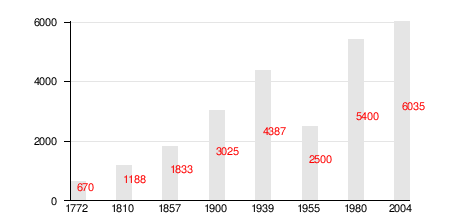Czarne
| Czarne | ||
|---|---|---|
| ||
 Czarne | ||
| Coordinates: 53°41′N 16°57′E / 53.683°N 16.950°E | ||
| Country |
| |
| Voivodeship | Pomeranian | |
| County | Człuchów | |
| Gmina | Czarne | |
| Area | ||
| • Total | 46.39 km2 (17.91 sq mi) | |
| Elevation | 136 m (446 ft) | |
| Population (2006) | ||
| • Total | 5,917 | |
| • Density | 130/km2 (330/sq mi) | |
| Postal code | 77-330 | |
| Website | http://www.czarne.go.pl | |
Czarne [ˈt͡ʂarnɛ] (German: Hammerstein) is a town in Człuchów County of Pomeranian Voivodeship in northern Poland. Population: 6,053 (2000).
Demographics

History
The town was founded on the territories that were formerly part of the Kingdom of Poland. They were acquired by the Monastic State of the Teutonic Order in 1308. Konrad von Jungingen granted the settlement town privileges in 1395. It lay on the bank of the Czarna river, hence its modern name. It was an important trade and military point due to the nearby Teutonic Order and Pomeranian frontier. After the Thirteen Years' War, according to the Second Peace of Thorn (1466), the town became part of Poland's province of Royal Prussia.
After the partitions of Poland the town became a part of the Prussian Province of West Prussia in 1772. In 1885 the Prussian Army built a large training ground (Übungsplatz) there.
In World War I the German Army used it for a large prisoner-of-war camp for Russian prisoners. In World War II it was the site of the notorious Stalag II-B in which tens of thousands, mainly Soviet prisoners, died from disease, mistreatment and malnutrition. In 1945 the town was ceded to Poland according to the post-war Potsdam Agreement and became part of the so-called Recovered Territories. Germans remaining in the town were expelled and replaced with Poles.
Notable residents
- Alexander Beer (1873–1944), architect
See also
- Stalag II-B
- Stalag IIB French informations
| ||||||||||
| ||||||||||||||||||||||||||||||||||||||||||||
Coordinates: 53°41′N 16°57′E / 53.683°N 16.950°E
